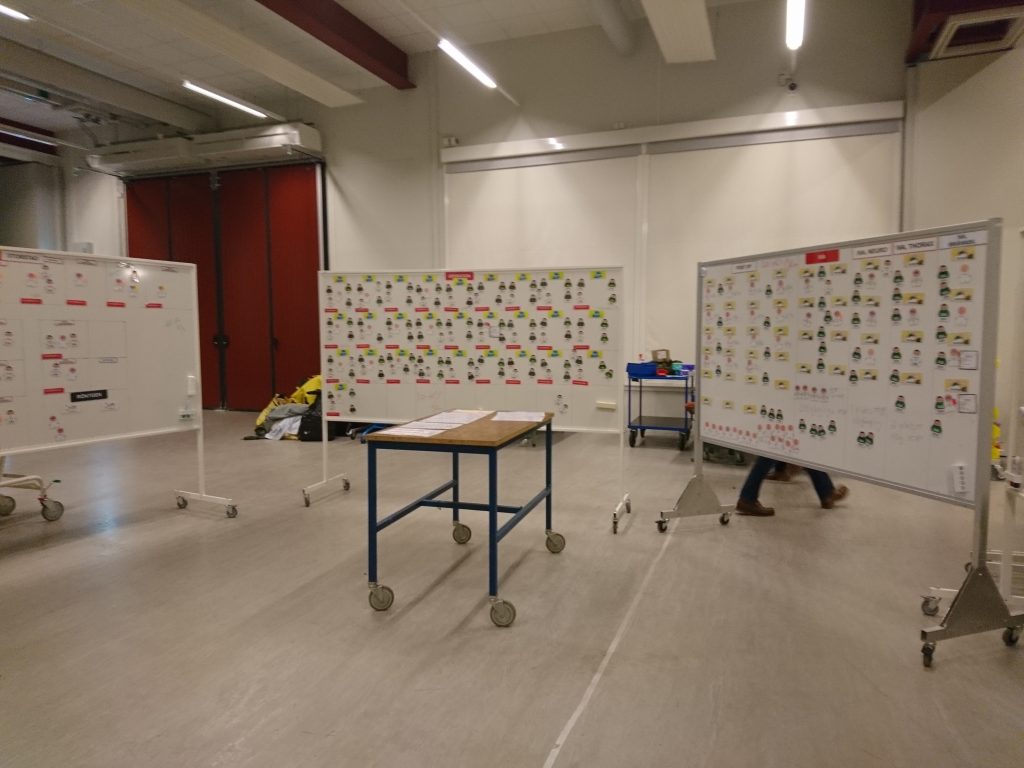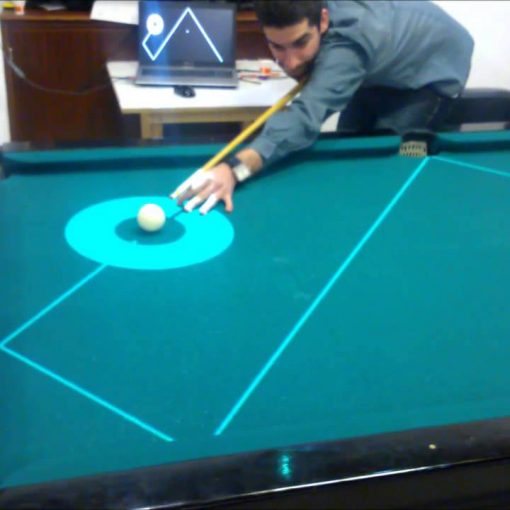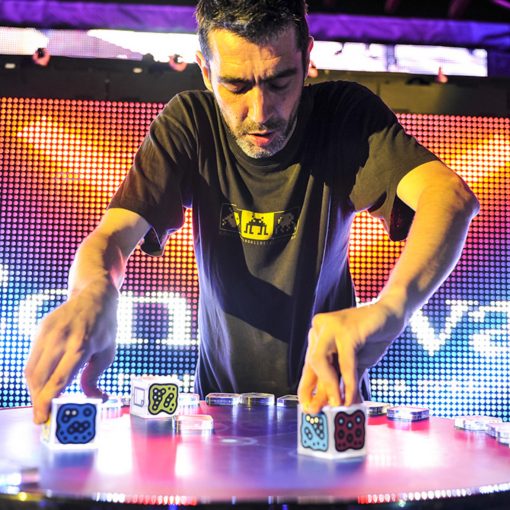Context
Non-digital training of hospital staff members responsible for planning and coordinating medical emergency response.
Design concept
As a simulation of events following a major accident is unfolded by an instructor, the participants in training manipulate the physical model of a hospital ward with representations of patients and of medical care resources.
The point here is that the physical model and the spatial qualities of the room support training and learning in a very effective way. Digital augmentation could be fruitful, but should most likely build upon the strengths of the spatial and physical environment rather than replacing it with, e.g., virtual or other non-tangible models.
Experiential qualities and related concepts
Collaborative, fluency, overview, performative, peripheral awareness, visibility.
Augmentation modality
Visual, (tactile).
Technical options
Whiteboards and magnets. Paper forms.
Prototyping techniques
N/A.
Source
The EmergoTrain System training environment from KMC, Linköping, ca 2012.




